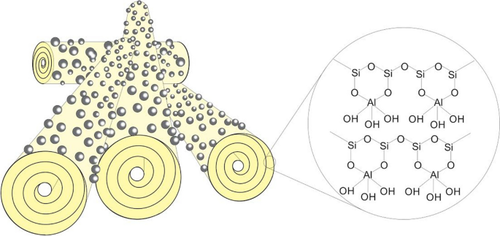Water, Air, & Soil Pollution ( IF 2.9 ) Pub Date : 2024-04-16 , DOI: 10.1007/s11270-024-07054-z Sevde Korkut , Türkan Ormanci-Acar , Basak Keskin , Meltem Ağtaş , Özlem Karahan , Tuğba U. Demir , Serkan Unal , Yusuf Z. Menceloglu , Ismail Koyuncu

|
Traditional methods like biological treatment, flocculation-coagulation, adsorption, and advanced oxidation are commonly employed for textile wastewater treatment, but their sustainability is hindered by issues such as the adverse impact of textile wastewater on microorganisms and the requirement for substantial chemical usage. In response to increasingly stringent legal discharge standards, membrane technologies are emerging as prominent alternatives for effective textile wastewater treatment. The application of photocatalysis as a pretreatment to improve effluent quality and treatment performance has shown effective results in the treatment of textile wastewater by nanofiltration (NF). However, innovative solutions are needed to improve the efficiency of UV photocatalytic reactors. Here, the TiO2/halloysite nanotube (HNT) photocatalyst was shown to completely remove dyes under UV illumination. Two wastewater samples from photocatalytic (PC) pretreatment were treated using innovative NF membranes with different contents. The study examined the impact of PC pretreatment on the flux of wastewater from a textile factory heat recovery tank, which increased from 18.32 to 27.63 L/m2.h. The membranes achieved > 98% removal in COD, while bare membrane achieved 95% removal in conductivity. The addition of s-DADPS as monomer and HNT as nanoparticles to the membranes with different compositions affected the cross-linking in the TFC layer. During the tests conducted on the water extracted from the dyeing tank, the color was completely eliminated without any loss of flux. Additionally, improvements in COD removal were observed.
中文翻译:

光催化预处理对纺织废水纳滤膜性能的影响
纺织废水处理通常采用生物处理、絮凝混凝、吸附和高级氧化等传统方法,但由于纺织废水对微生物的不利影响以及需要大量化学品使用等问题,其可持续性受到阻碍。为了应对日益严格的法定排放标准,膜技术正在成为有效纺织废水处理的重要替代方案。应用光催化作为预处理来改善出水水质和处理性能,在纳滤(NF)处理纺织废水中显示出有效的效果。然而,需要创新的解决方案来提高紫外光催化反应器的效率。在此,TiO 2 /埃洛石纳米管(HNT)光催化剂被证明可以在紫外线照射下完全去除染料。使用不同含量的创新纳滤膜处理来自光催化 (PC) 预处理的两个废水样品。该研究考察了PC预处理对纺织厂热回收池废水通量的影响,废水通量从18.32 L/m 2 .h增加到27.63 L/m 2 .h。膜的 COD 去除率> 98%,而裸膜的电导率去除率达到 95%。将s-DADPS作为单体和HNT作为纳米颗粒添加到不同组成的膜中会影响TFC层中的交联。在对从染色槽中提取的水进行的测试中,颜色完全消除,且通量没有任何损失。此外,还观察到 COD 去除率有所提高。



























 京公网安备 11010802027423号
京公网安备 11010802027423号